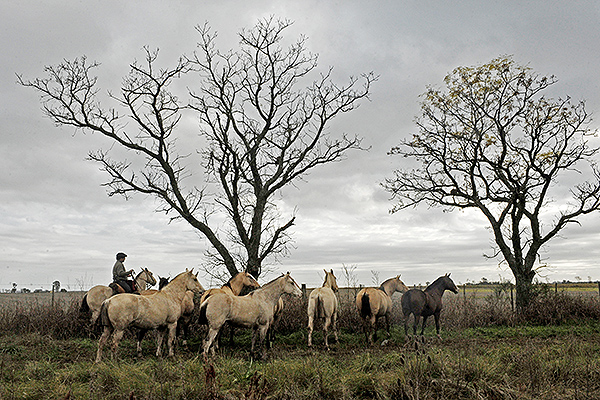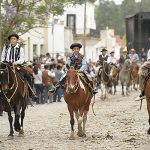The first Gauchos of Argentina
Follow in the footsteps of the first Argentinian Gauchos, centaurs of the Pampas who are now back in the legend.
The word Gaucho has different etymologies but we think that the most well-known comes from the Quechua word huachu which means orphan, solitary or vagabond person…

In the early 17th century, the first Gauchos appeared on the coast of Argentina, who at this time were also called gauderios or changadores. Within a few years, they started to spread across the province of Buenos Aires and the countryside.
The presence of the Gauchos in these lands had a lot to do with the wild cattle of Argentina. These cattle had usually escaped from the livestock corrals of the estancieros (big landowners) of Buenos Aires, becoming wild animals. By this time, thousands of ownerless cattle and wild horses had flourished in the deserted pampas. They were called Maroons.
These courageous men, who later became known as the Gauchos, began to move through the pampas, surviving easily, thanks to the free-range cattle. To feed themselves, they just needed to kill and butcher the animal, with nature providing them with anything else they needed. Thus the image of the free gaucho was born; a man without employment or fixed abode, riding long distances with his horses and stopping at nightfall to sleep atop his poncho, under the stars, in the solitude of the plains. He led a nomadic life, often far from the city.
In the 1660s, the government gave the landowners permission to catch wild cattle (in Argentina we call it vaquear) to develop their cattle industry. Naturally, this work was given to the Gauchos, which meant they explored more and more of the Pampas region. They became the first Argentine citizens to found a peasant society.
From that time on, Gauchos wandered from rancho to rancho (rustic house), on their horses, always equipped with their lasso and facón (machete), dressed in wide-legged white trousers, a cloth belt, a poncho and a hat. These items were the sum total the Gaucho’s worldly positions. His only society was generally his family and companions from the pulperías (old bar & grocery store).

At first, the Gaucho’s house was often primitive, but as time went on, the gauchos began to settle down and improve their puestos with walls of dried mud and pieces of leather to cover the door and windows. Since all that was required of them to eat, was to kill a cow or a calf, their diet was made up almost exclusively of grilled meat, but not salted, as salt was an expensive commodity at that time. From the animal, they took only some meat to feed themselves, and leather (taken from the legs of the animal) to make a pair of boots or some clothes, which they could then exchange for yerba mate (typical infusion of Argentina), biscuits or alcohol.

This lifestyle continued until the early 18th, when the authorities stopped issuing permits for vaquear, and the wild cattle effectively became extinct due to the importation and installation of barbed wire. At this time, the large working cattle farms (Estancias) were the ones who were involved in the Pampas and then took over the cattle.
Nowadays, the gaucho still retains many of his customs, which can still be observed in his daily tasks at the Estancias, and also through his social activities such as singing, music, rituals and horse demonstrations which he is always very proud to share.
Even though he sometimes has to trade his horse for a tractor and his lasso for a telephone, his legendary traits, such as pride, loyalty and bravery, can still be found in the Argentinian countryside.






